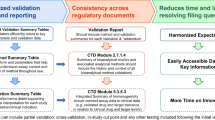Abstract
IgE antibody concentration, affinity, clonality and specific activity (also known as the allergen-specific IgE to total IgE ratio) influence the translation of IgE responses into clinically evident allergic symptoms following allergen exposure. Reported IgE-specific activity levels >3–4% place allergic individuals undergoing anti-IgE (Omalizumab®) therapy at a disadvantage for poor resolution of their allergy symptoms following manufacturer’s recommended dosing schemes. We investigated the hypothesis that the specific activity of the IgE antibody response is highly variable with respect to age, allergen specificity and an individual’s total serum IgE level. Second, we investigated whether the IgE-specific activity level influences the extent and rate of loss of effector cell mediator release. IgE-specific activity distributions were plotted against age, allergen specificity and total serum IgE using 18,950 paired total IgE and allergen-specific IgE antibody data obtained from the analysis of sera from 3,614 allergic subjects and covering 182 allergen specificities. The fraction of specific IgE antibody of the total serum IgE was dependent on age of the individual, epitope specificity (clonality) and total serum IgE. The youngest group of allergic individuals with the lowest total serum IgE levels tended to have the highest allergen-specific IgE to total IgE ratios. Hymenoptera venom (54%), peanut (33%) and milk (27%) were the three allergen specificities that elicited the highest frequency of IgE-specific activities >4% among sensitized individuals. A prospective double-blind, placebo-controlled clinical study involving anti-IgE treatment of cat-allergic subjects showed IgE-specific activity was remarkably constant over the 16-week course of treatment, despite the up to 8-fold rise in total serum IgE following repetitive Omalizumab® administration. Changes in specific and total IgE levels paralleled each other in patients receiving anti-IgE therapy. The fastest rate of reduction in cat allergen-induced basophil histamine release following anti-IgE therapy was observed when the cat-specific IgE to total IgE ratio was <2.5%. This reflected the more rapid loss of surface cat-specific IgE antibody with anti-IgE therapy in allergic individuals who displayed a more diverse IgE antibody repertoire. We conclude that IgE-specific activity is an age-, IgE heterogeneity- and total serum IgE-dependent variable that influences the magnitude of effector cell mediator release, and by inference, ultimate allergic symptom induction.





Similar content being viewed by others
References
Ishizaka K, Ishizaka T. Physiochemical properties of reaginic antibody I. Association of reaginic activity with an immunoglobulin other than gamma A or gamma G globulin. J Allergy. 1966;37:336–49.
Johansson SGO, Bennich H. Immunological studies of an atypical (myeloma) immunoglobulin. Immunology. 1967;13:381–94.
Walker SA, Riches PG, Wild G, Ward AM, Shaw PJ, Desai S, et al. Total and allergen-specific IgE in relation to allergic response pattern following bone marrow transplantation. Clin Exp Immunol. 1986;66:633–9.
Burrows B, Martinez FD, Halonen M, Barbee RA, Cline MG. Association of asthma with serum IgE levels and skin test reactivity to allergens. N Eng J Med. 1989;320:271–7.
Sears MR, Burrows B, Flannery EM, Herbison GP, Hewitt CJ, Holdaway MD. Relation between airway responsiveness and serum IgE in children with asthma and in apparently normal children. N Engl J Med. 1991;325:1067–71.
Hamilton RG. Assessment of human allergic diseases. In: Rich RR, Fleisher TA, Shearer WT, Schroeder HW, Frew AJ, Weyand CM, editors. Clinical immunology: principles and practice, 3rd ed, Chap. 100. London: Mosby Elsevier Ltd; 2008. p. 1471–84.
Hamilton RG. Proficiency survey-based evaluation of clinical total and allergen-specific IgE assay performance. Arch Path Lab Med. 2010;134 (in press).
Christensen LH, Holm J, Lund G, Riise E, Lund K. Several distinct properties of the IgE repertoire determine effector cell degranulation in response to allergen challenge. J Allergy Clin Immunol. 2008;122:298–304.
Matsson PNJ, Hamilton RG, Homburger HA, Esch RE, et al. Analytical performance characteristics and clinical utility of immunological assays for human IgE antibodies of defined allergen specificities. 2nd ed. Wayne, PA: Clinical Laboratory Standards Institute; 2008.
Holgate ST, Chuchalin AG, Hebert J, Lotvall J, Persson BG, Chung KF, et al. Efficacy and safety of a recombinant anti-IgE antibody (omalizumab) in severe allergic asthma. Clin Exp Allergy. 2004;34:632–8.
Johansson SG, Nopp A, Oman H, Ankerst J, Cardell LO, Grönneberg R, et al. The size of the disease relevant IgE antibody fraction in relation to ‘total-IgE’ predicts the efficacy of anti-IgE (OmalizumabR) treatment. Allergy. 2009;64:1472–7.
Kober A, Perborn H. Quantitation of mouse-human chimeric allergen-specific IgE antibodies with ImmunoCAP technology. J Allergy Clin Immunol. 2006;117:S219. (Abstract 845).
Ker J, Hartert TV. The atopic march: what’s the evidence? Ann Allergy Asthma Immunol. 2009;103:282–9.
Barbee RA, Halonen M, Kaltenborn W, Lebowitz M, Burrows B. A longitudinal study of serum IgE in a community cohort: correlations with age, sex, smoking, and atopic status. J Allergy Clin Immunol. 1987;79:919–27.
Holgate ST. Implications for clinical practice in anti-IgE therapy. A new era in the control of severe persistent allergic asthma. Copenhagen: European Respiratory Society Congress; 2005.
Johansson SGO, Oman H, Nopp A, Petterson S. Importance of IgE antibody levels in anti-IgE treatment. Allergy. 2006;61:1216–9.
Eckman JA, Sterba PM, Kelly D, Alexander V, Bochner BS, MacGlashan DW, Jr, Saini SS. Effects of omalizumab on basophil and mast cell responses using an intranasal cat allergen challenge. J Allergy Clin Immunol. 2010;125 (in press).
Hamilton RG, Saito H. IgE antibody concentration, specific activity, clonality, and affinity measures from future diagnostic confirmatory tests. J Allergy Clin Immunol. 2008;122:305–6.
Acknowledgments
The authors acknowledge the excellent basophil studies performed by Patricia Sterba and Jack Wisenauer for his excellent work in the analysis of the cat-specific IgE and total IgE levels in the clinical study subjects. This work has been funded in part by Asthma and Allergic Disease Research Centers Grant U19AI070345 from the National Institutes of Health.
Author information
Authors and Affiliations
Corresponding author
Rights and permissions
About this article
Cite this article
Hamilton, R.G., MacGlashan, D.W. & Saini, S.S. IgE antibody-specific activity in human allergic disease. Immunol Res 47, 273–284 (2010). https://doi.org/10.1007/s12026-009-8160-3
Published:
Issue Date:
DOI: https://doi.org/10.1007/s12026-009-8160-3




